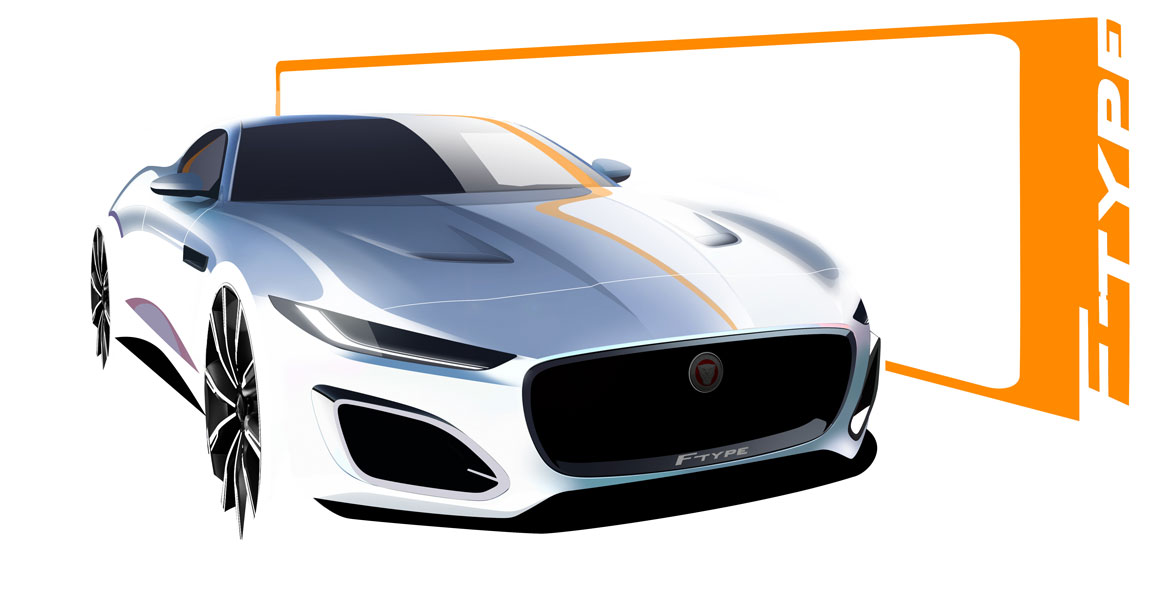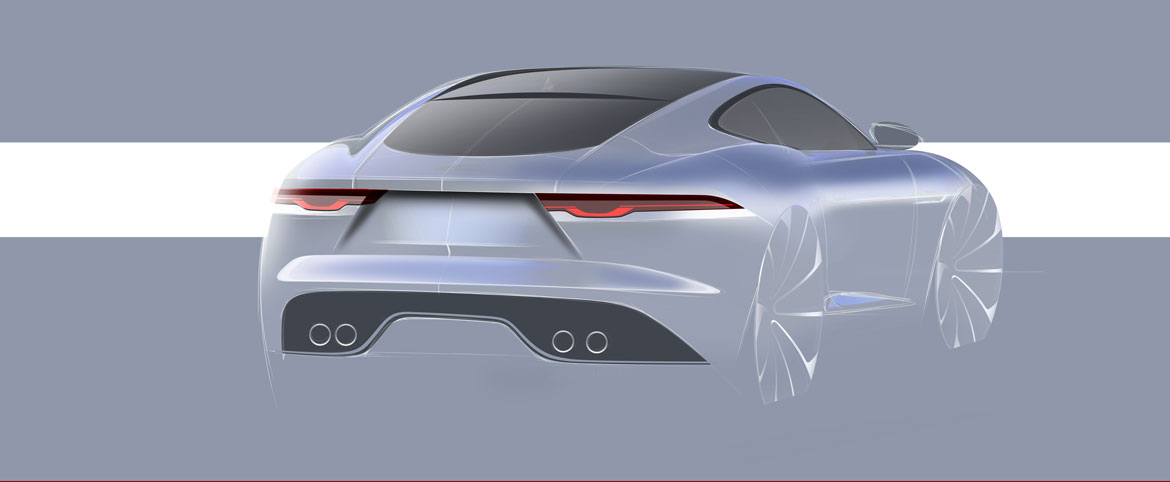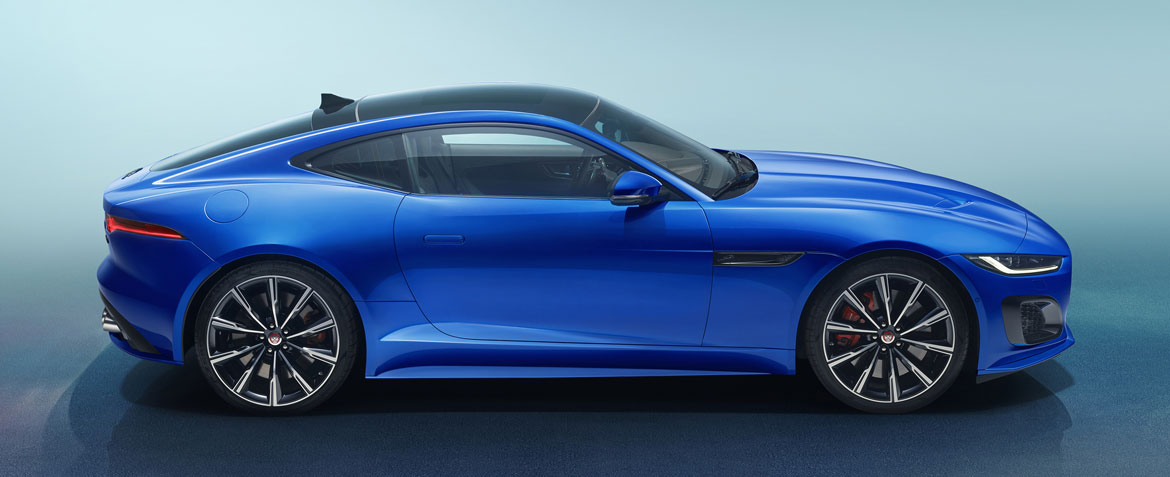The new Jaguar F-Type is, essentially, the child of technology. To make it even sportier, they’ve given it a bigger grille (“A beautiful mouth”, says Julian Thomson), but this touch, with a definite visual impact, was made possible by reducing the space occupied by the light units. These are “of a type”, Thomson specifies, “that the technology of 2013, when this series was created, didn’t permit”.
Front and rear lights from new technologies
Narrower and more streak-like, the headlights give the vehicle – both the coupé and the convertible – a more modern look and make it appear wider and lower, just as the tail lights – which are also the product of new technology – lighten the tail and help accentuate “the Jaguar’s rich sporty tradition”.
This second series of the F-Type is the first Jaguar that Thomson, who spent twenty years in the control room alongside Ian Callum and has been head of design at Jaguar for around one year, has baptised.
A transformed grille
Always “very elegantly proportioned”, the F-Type is, in his opinion, “fresh, modern, and with a purity of shapes. We would always have wanted a front end that wasn’t dominated by the headlights, but we didn’t have the means to reduce them”. The new grille is, thus, central to the transformation. But was it really necessary, given that the vehicle was still attractive? “The F-Type can count on a legion of passionate followers who are always waiting for the latest version. That’s where the new exterior graphic elements and the touches on the interiors, in terms of quality and technology, come in”.
Clear ideas right from the start
The project was launched around the middle of 2017. The ideas were very clear right from the start, because of which, after the original sketches and the digital work, only two 1:1 clay models were needed. Matthew Beaven, who had already curated the F-Type original, worked on the exteriors in collaboration with the exteriors director, Adam Hatton. On the other hand, Alister Whelan worked on the interiors, which include the instrumentation on a 12.3-inch screen and a 10-inch touch-screen.
Challenge the design language
After six months of work by the designers, it was complete. “The language of design”, Thomson observes, “is always moving. We need to discuss it, challenge it, and move ahead. The automobile industry is changing very quickly, between electrification, shared mobility, and autonomous driving. Thanks also to our new design studio (A&D no.239) we will be able to determine the direction of our brand, its position in the world of the car, its features.
More attention to health and mobility
And all this before the Covid crisis hit, when a different attitude towards luxury, sustainability, and pollution was already clear. The virus has focused public attention on health, mobility, and even the status of the car. Jaguar has always produced elegant, not throwaway cars; our entry into the electric market is adapting well to this new reality. Soon we will have an entirely electric XJ, which is truly revolutionary”. And an F-Type that runs on batteries? “For now, no. But anything is possible. Sooner or later, we will need to have an electric sports car; it’s a question of finding the right moment”.
(Full article in A&D no. 243)
















